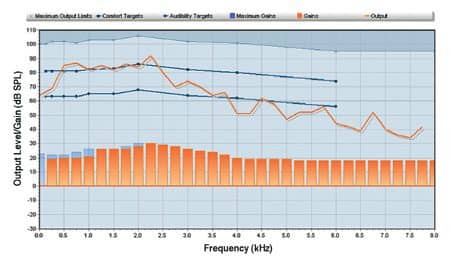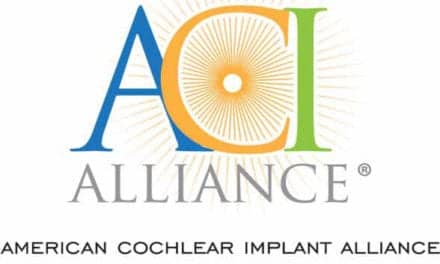Are you a gambler? Or do you prefer peace of mind? Would you be willing to bet $3,000 on never losing, dropping, or having to repair a high-technology device small enough to fit into one’s ear? Or would you rather pay a little extra to be able to replace or repair that device for free?
Even in tough economic times—or maybe especially during tough economic times—protecting one’s investment is a smart idea. When that investment helps to improve one’s hearing, protection seems a particularly bright idea.
“I think the national average for loss [of a hearing aid] is around 2% to 3% and that’s typically what we experience. So if someone is making a large investment into hearing aids, it’s a good idea for the first 3 to 5 years to have—at the very least—loss and damage [warranties],” says Tony Lombardo, MS, F-AAA, a clinical audiologist with The Hearing Stores of Minnesota.
Warranties can be confusing, notes Lombardo, but audiologists can simplify them for patients, and providers can do so for audiologists. Pricing programs have gotten less complicated, and new online tools enable a faster and more convenient claims process. Greater awareness helps too.
Consumers are offered warranties on most of today’s big-ticket items, such as computer equipment, electronics, and appliances. Decisions to buy warranties are often influenced by perceived value, which factors in the cost of the product, potential repairs, and the warranty itself. Yet they are also influenced in some small way by the purchaser’s gambling nature—or need for peace of mind.
“A warranty for a hearing aid is essential because of the possibilities that the hearing aid can break down as a result of the miniature electronic components, or it can be easily lost under many different circumstances,” says Richard (Dick) Kaiser, president of Discovery Hearing Aid Warranties in Mobile, Ala, adding, “You’re not going to lose a washing machine.”
A SAFE BET
Warranties are designed for peace of mind, and different options exist to suit people’s budgets as well as their tolerance for risk. Where manufacturer warranties leave off, third-party providers pick up.
New hearing aids typically come with some type of manufacturer warranty. “When a manufacturer sells a hearing instrument, at a bare minimum, the hearing aid is covered for a year for loss, damage, and repairs,” Lombardo says. Beyond that it varies with the manufacturer and the level of product technology whether a person gets a 1-year, 2-year, or 3-year repair warranty.
Lombardo tracks when his patients’ warranties are due to expire and has them come in before that happens. For many patients, this occurs on an annual basis though initial manufacturer warranties can cover a period of up to 3 years. His third-party hearing aid insurance provider offers a similar program. “You want to keep patients informed and let them know what their options are from square one throughout the entire time you work with them,” Lombardo says.
He acknowledges that the reminders are good for him too. “It encourages patients to come back and see me, which ultimately helps me to manage patients and keep them satisfied and happy,” Lombardo says.

|
ESCO ONLINE
Patients often have a number of options after the initial manufacturer warranty expires. Manufacturers will sometimes offer extended options, but these may run out before the hearing aid does. “It varies by manufacturer. Some manufacturers won’t fix elements on some products after 5 years,” says Kathleen D. Kuntz, director of business development for ESCO, a hearing aid insurance provider in Plymouth, Minn. Hearing aids generally have a life cycle of 5 years.
ESCO covers hearing aids up to 7 years old with its two plans: Protection Plus and Platinum Plan. Protection Plus covers lost and damaged hearing aids. The Platinum Plan extends coverage to include repairs for normal wear and tear.
A third program, Reminder Care, notifies customers when their warranty is about to expire and suggests a visit to the audiologist. The notices are intended to prevent lapses in service or care; patients sign up at the time of sale.
In response to current trends, the company introduced a payment plan option as well as online tools at this year’s AudiologyNOW!, the annual meeting of the American Academy of Audiology. Users can request quotes, apply for coverage, download claim forms, and sign up for Reminder Care via the company’s Web site. “Anything that makes it easier to update a policy, re-enroll, or get information makes the program easier to manage,” Lombardo says.

|
DISCOVERY DISCOVERED
Although Discovery did not introduce any new warranty products at the show, the company is constantly expanding its programs to include new hearing aid models. “As manufacturers develop new models, we add them to our list, categorizing them within the proper rate schedules,” Kaiser says. Audiologists are kept informed of updates through a monthly newsletter.
Discovery’s three hearing aid insurance programs offer comprehensive coverage, which includes loss, damage, or components failure; loss and damage coverage only; or damage and component failure only. “So if someone jumps into a pool and the hearing aid stops working but is not physically damaged, that would not be covered under loss and damage, but it would be covered under failure,” Kaiser says.
The four tiers of pricing for each level of insurance coverage include Rate Schedule 1, which covers all conventional analog and entry-level digital hearing aids; Rate Schedule 2, encompassing mid-level digital devices; Rate Schedule 3, which includes advanced high-technology digital aids, as well as the Tinnitus Treatment available from Neuromonics, Bethlehem, Pa; and Rate Schedule 4, which protects investments in cochlear and bone-anchored hearing processors and Logicom FM receivers for cochlear implants.
Tiered payments rather than multiple price points for each model are easier for both audiologists and patients to understand. Discovery’s rate schedules have not changed in the past few years, and Kaiser does not anticipate any increases soon, “especially under these current economic conditions,” he adds.
LET THE CHIPS FALL
Like health care, the hearing industry has always been a little insulated from economic booms and busts, but like all industries, it is not completely immune to today’s economic climate. “Normally during tough economic times, the purchase of insurance does go up,” Kuntz says.
Although uncertain of the causes, Kaiser notes that Discovery’s 2009 gross revenues are ahead of those for 2008. “I don’t know if that’s because clients are hesitant to invest in new hearing aids and are putting old ones under warranty or whether they are understanding the need or viability of having their instruments under warranty protection,” Kaiser says. Either way, the company’s growth rate bears out greater investment in insurance during these tougher economic times.
It is possible that, in part, consumers are loss-conscious and not so willing to gamble their money on their hearing. “If you just spent $6,000 on a set of hearing aids, you want to know they are covered,” Kuntz says.
With new aids, a patient doesn’t have to make a decision about purchasing additional warranty protection until the manufacturer warranty runs out. This gives the patient time to learn the new device as well as appropriate behaviors. “First-time users have no idea how it will withstand perspiration or a drop to the floor,” says Joan Armbruster, MS, a New York-based audiologist.
When that warranty does expire, new extended programs are typically 1 year, though they can be shorter, particularly as a device ages. “With some companies, once a hearing aid is 5 years old, even if a patient wants to pay extra for a 1-year repair warranty, it’s not available. The device is more likely to need repairs as it gets older, so the manufacturer will still complete the repair but will offer a 6-month, and sometimes only a 3-month, warranty,” Armbruster says.
The shorter warranty is also an option for the extremely budget-conscious client, but Armbruster estimates she sees only one or two such patients a year. “We feel more comfortable with the 12-month warranty and sometimes do not even offer shorter options,” Armbruster says. With new aids, she ensures coverage for 2 years, even if this means the purchase of an extra year.
HEDGING BETS
“For the most part, the prices are pretty fair. Some people will look at pricing and it will be an issue, but in the eyes of many people who really understand how the policy works, it’s worth it,” Lombardo says.
The value comes from the protection as well as the ease with which a claim is filed. Lombardo notes he has never had a claim denied through his third-party provider ESCO.
“Another thing I like about ESCO is that they allow me to maintain a direct relationship with the manufacturer if there is a claim,” Lombardo says. So while the insurance company handles the paperwork, the hearing aid is sent back and forth directly between Lombardo and the manufacturer. “It cuts down on the amount of time a patient is without a hearing aid while in the process of the claim,” Lombardo says.
There are very few exclusions, and even the incredibly unlucky can often find coverage. “We’ve had clumsy people and have never had a factory say they would not repair the device at no charge—when the plastic is intact,” Armbruster says.
Cracked casings and refits may see some charges, but it depends on the policy. Discovery’s loss and damage coverage includes visible external damage to the shell or faceplate, but not the internal components; the comprehensive plan covers it all. ESCO’s accidental damage covers the entire device.
Of course, if a patient does happen to be clumsy, Armbruster tends to recommend they get as much protection as they can. “The patient knows that if they drop it in a sink of water, they won’t get a bill. If they drop it on the floor and break a microphone, they won’t get a bill,” Armbruster says.
Kaiser notes that Discovery’s most popular plan is its comprehensive option followed closely by damage/components failure. “The comprehensive plan takes all of the contingencies into consideration and gives a person a worry-free warranty,” Kaiser says.
That worry-free attitude extends to the audiologist, who knows the patient’s investment is protected. An easy plan and claims process helps to keep the patient satisfied and the hearing care practitioner’s costs down. In some instances, it can even help to increase income. Discovery offers audiologist clients a 20% rebate on warranties they sell, “to cover the time and effort they spend with the patient,” Kaiser says. In this way, everybody wins, which makes the warranty a safe bet for all.
Renee Diiulio is a contributing writer for Hearing Review Products. For more information, contact [email protected].





